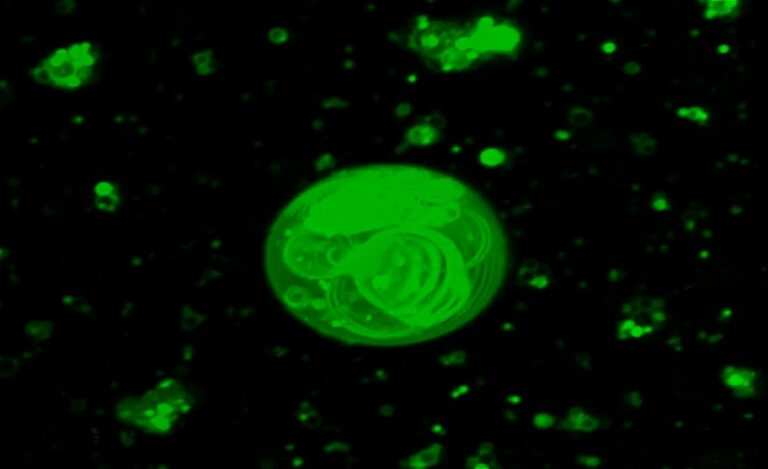Scientists Explain the Origins of the First Cells on Earth
It is estimated that 4 billion years ago, conditions on Earth that could support life were in the making. In origin-of-life research it is frequently asked how the kind of chemistry that prevailed on the early Earth was like the chemistry that is assumed to support life now.
They understand that round structures of fats known as protocells were at some point the early form of a cell during the emergence of life. However, how did simple protocells first originate and evolve to the level seen on Earth at present?
However, the current researchers from Scripps Research have revealed one possible route through which protocells probably originated and biohemically evolved to support multiple functions.
This paper was posted online in the peer-reviewed journal Chem on February 29, 2024, and proposed that phosphorylation (the addition of phosphate groups to the molecule) could have happened at an earlier stage than was formerly believed. This would result in formation of more complex, double chained protocells which could accommodate chemical reactions and divide with variety of functionality. Thus, demonstrating how protocells formed provided insight into how early evolution could have occurred.
“At some point, we all wonder where we came from We have now learned a possible way that phosphates could have been incorporated into cell -like structures earlier than has been previously considered, which is the foundation for life,” stated Ramanarayanan Krishnamurthy, Ph. D. , senior co-author and professor of Chemistry at Scripps Research.
“This discovery assists us to explain chemical contexts of early Earth so we can learn the begin of life and the ways life can develop on early Earth. ”
Krishnamurthy and his group analyze how chemical processes took place in order to produce the simple chemicals and formation that were observed before the onset of life in prebiotic Earth. Krishnamurthy is also a co-leader of a NASA effort to understand the origins of life from these early settings.
In this study, Krishnamurthy and his team worked closely with soft matter biophysicist Ashok Deniz, Ph. D. , the co-corresponding senior author of the study and a professor in the Department of Integrative Structural and Computational Biology at Scripps Research.
They wanted to know whether phosphates may have played some roles during the formation of protocells. Inasmuch as phosphates are involved in all chemical processes in the body, Krishnamurthy considered their possibility to have been in existence at an earlier time than proposed.
Earlier, scientists believed that protocells formed from fatty acids and it was not known how protocells underwent a switch from a single chain to a double chain of phosphates to make it more stable and trap chemical reactions.
There are a number of prebiotic conditions for which the scientists strived to create the conditions that could be similar to those of the prebiotic Earth. They first guess on three possible chemical combinations that might form vesicles, that are spherical structures of lipids akin to protocells.
The chemicals used included fatty acids and glycerol – a byproduct of soap production that many believe existed in prehistoric earth. Next, they noted the consequence of these mixtures and added more chemicals to produce other mixtures. These solutions were cooled and heated on repeat overnight with some shaking to allow additional chemical reactions to occur.
They then stained the mixtures using fluorescent dyes and determined whether vesicle formation had occurred. In some of the studied cases, the researchers altered the pH or the proportions of the components in order to evaluate their influence on the process of vesicle formation. They also studied the influence of metal ions and temperature on the stability of the formed vesicles.
“When we performed our experiments the vesicles switched from fatty acid environment to phospholipid environment that implies a similar chemical environment as existed 4 billion years ago,” has stated first author Sunil Pulletikurti, post-doctoral researcher in Krishnamurthy lab.
As it may be deduced, fatty acids and glycerol may have been phosphorylated to form that more stable form of a double chain. For instance, glycerol derived fatty acid esters may have resulted in vesicles with varying sensitivities to metal ions, temperatures, and pH—a significant process of evolution.
“We have found one possible way that phospholipids could have come into existence during this chemical evolution process,” Deniz explains. “It is inspiring to discover how earlier chemistries could possibly have evolved to enable life on Earth. ”
After that, the scientists want to elucidate why some of the vesicles fused and the others divided to have a better look at the mechanisms of protocells.
Reference: Experimentally Modeling the Emergence of Prebiotically Plausible Phospholipid Vesicles, Chem (2024). DOI: 10.1016/j.chempr.2024.02.007
Do not forget to share your opinion with us to provide you with the best posts !




0 Comments